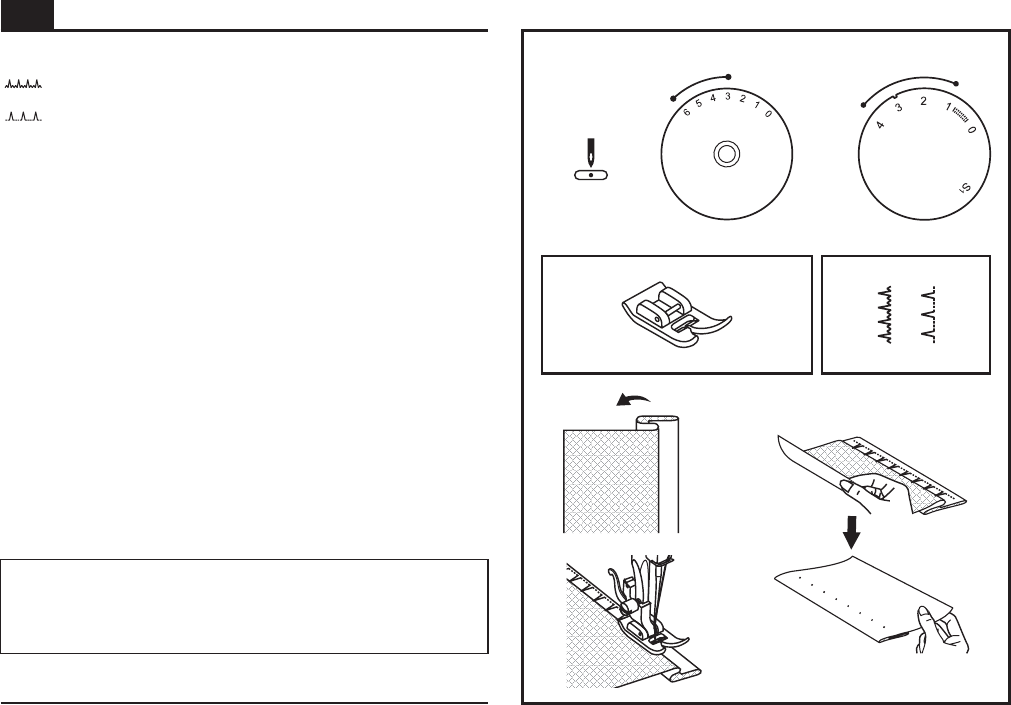
36
2
1
For hems on curtains, trousers, skirts, etc.
Blind hem for stretch fabrics.
Blind hem for firm fabrics.
Set the Stitch Width Dial at
a setting appropriate for the weight/type of fabric being sewn,
within the range shown in the diagram on the right of the
page. Generally, a narrower stitch is used for lighter weight
fabrics, and a wider stitch is used for heavier weight fabrics.
Sew a test first to make sure the machine settings are
appropriate for the fabric.
Blind Hem:
Set the Stitch Length Dial with the range shown on the
diagram at the right. Blind hems, however, are normally sewn
with a longer stitch length setting.
Turn up the hem to the desired width and press. Fold back
(as shown in Fig. 1) against the right side of the fabric with
the top edge of the hem extending about 7 mm (1/4") to the
right side of the folded fabric.
Start to sew slowly on the fold, making sure the needle
touches slightly the folded top to catch one or two fabric
threads. (2)
Unfold the fabric when hemming is completed and press.
To make blind hem sewing even easier, use a blind hem
foot, available from your SINGER retailer. (See page 10
for part number)
Note:
M
Blind Hem
EN


















